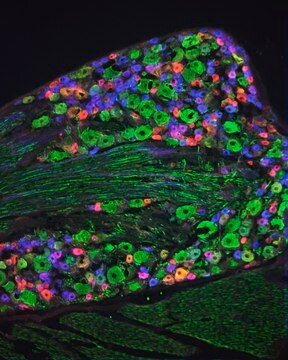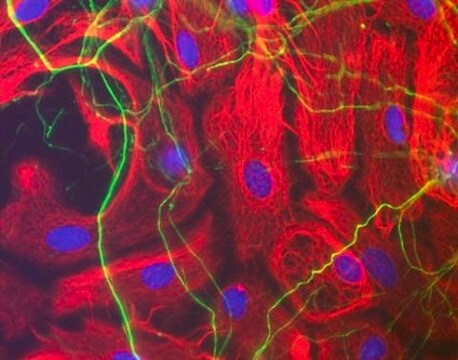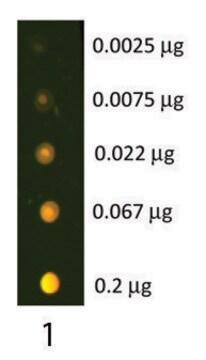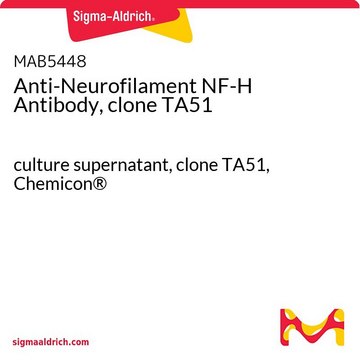SAB4200705
Anti-Neurofilament 200 (Phos and Non-Phos) antibody, Mouse monoclonal
clone N52, purified from hybridoma cell culture
Sinônimo(s):
Anti-CMT2CC, Anti-NFH
About This Item
Produtos recomendados
forma do anticorpo
purified from hybridoma cell culture
Nível de qualidade
tipo de produto de anticorpo
primary antibodies
clone
N52, monoclonal
peso molecular
~200 kDa
reatividade de espécies
mouse, pig, feline, rat, monkey, bovine, human
concentração
~1.0 mg/mL
técnica(s)
immunoblotting: 2.5-5 μg/mL using human neuroblastoma SH-SY5Y cell line fresh lysate
immunofluorescence: suitable
immunohistochemistry: 10 μg/mL using heat-retrieved formalin-fixed, paraffin-embedded human Cerebellum sections
Isotipo
IgG1
nº de adesão UniProt
Condições de expedição
dry ice
temperatura de armazenamento
−20°C
modificação pós-traducional do alvo
unmodified
Informações sobre genes
pig ... NEFH(100156492)
Descrição geral
Especificidade
Aplicação
- immunoblotting
- immunofluorescence
- immunohistochemistry
Ações bioquímicas/fisiológicas
forma física
Armazenamento e estabilidade
Exoneração de responsabilidade
Não está encontrando o produto certo?
Experimente o nosso Ferramenta de seleção de produtos.
Código de classe de armazenamento
10 - Combustible liquids
Ponto de fulgor (°F)
Not applicable
Ponto de fulgor (°C)
Not applicable
Certificados de análise (COA)
Busque Certificados de análise (COA) digitando o Número do Lote do produto. Os números de lote e remessa podem ser encontrados no rótulo de um produto após a palavra “Lot” ou “Batch”.
Já possui este produto?
Encontre a documentação dos produtos que você adquiriu recentemente na biblioteca de documentos.
Nossa equipe de cientistas tem experiência em todas as áreas de pesquisa, incluindo Life Sciences, ciência de materiais, síntese química, cromatografia, química analítica e muitas outras.
Entre em contato com a assistência técnica







